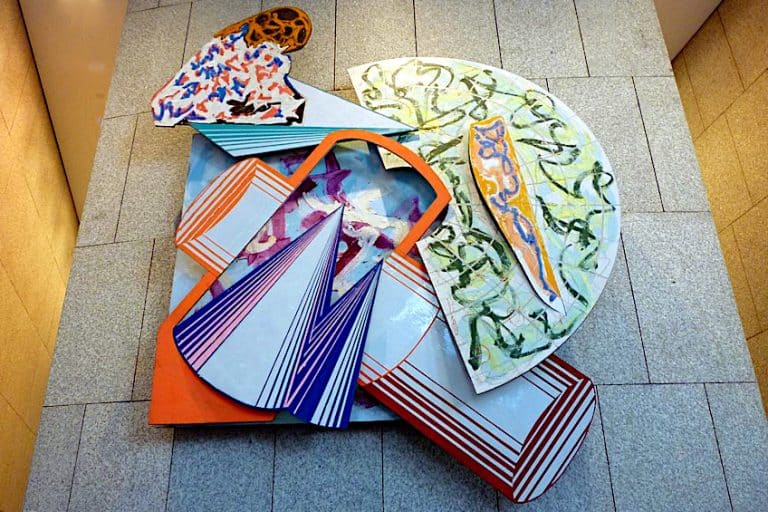Andy Goldsworthy – A Look at Nature Artist Andy Goldsworthy
Nature artist Andy Goldsworthy, who followed in the footsteps of the Land Art movement, produces sculptures that are specific to their location in both natural and urban settings. His artworks ultimately question the fragility of the earth, as he uses nature as his canvas to create artworks of unparalleled beauty. Goldsworthy’s approach to art is that his creations need to exist in conjunction with nature, with this peaceful and organic approach evident in his work.
Table of Contents
Andy Goldsworthy Biography
Andy Goldsworthy (born July 1956) is a British sculptor, photographer, land artist, and environmentalist, who is best known for the transient works that he creates in nature using materials found at the site. Andy Goldsworthy artwork is classified as part of the Land Art movement and is said to document the passage of time through their impermanence.
In his earlier works, Goldsworthy expressed an innate knowledge that demonstrated his awareness about the fleeting identity of landscapes and nature and understood that they could not be permanently altered. Within his current artworks, this viewpoint is still evident. Goldsworthy’s works are kept in various collections around the world, including the Courtauld Institute of Art in London, the National Gallery of Art in Washington D.C., and the Storm King Art Center in New York. Goldsworthy lives in Scotland today, where he continues to produce his temporary artworks.

Born in Cheshire, England, Goldsworthy grew up in West Yorkshire and from about the age of 13, began working as a farm laborer when he was not in school. His family introduced him to agriculture when he was very young, which began to stimulate his great interest in nature, as well as the changing of the seasons. This experience of working in nature enabled him to develop an acute awareness and understanding of his surroundings, as well as an appreciation for the fleeting characteristics of different landscapes.
He has since likened the repetitive nature of the farm work he completed to that of making sculptures, as he describes the routine involved as rhythmic enough to get completely absorbed into it. In 1974, Goldsworthy studied fine art at the Bradford College of Art for a year. Following this, he attended the now-called University of Central Lancashire from 1975 until 1978, which is where he graduated from and received his Bachelor of Arts degree.
During his studies, Goldsworthy familiarized himself with the work of fellow British artists who followed an environmental philosophy, such as Hamish Fulton and Richard Long.
It was during his studies that Goldsworthy discovered his desire to create art outside in nature as opposed to being confined to a studio. Thus, some of Goldsworthy’s earliest works were rock sculptures that were created at Morecambe Bay, a beach close to his art school. Here, Goldsworthy would create temporary structures that would be destroyed when the tide came in.
After his studies, he stayed in Langholm in Dumfries and Galloway before moving to Scotland in 1985. It was there that he began to produce works that were inspired by the great Robert Smithson, as well as other influential land artists who created work during the 1960s and 1970s. Goldsworthy described his gradual move northwards as something that was essentially out of his control, as he felt driven by both economic opportunities and the desire to work in these areas.
Throughout the 1980s, Goldsworthy became affiliated with the Environmental Art movement alongside artists Chris Drury and Richard Long, as his artworks were created outside in nature using only natural elements and found objects that were sourced at the site. Some of the objects included using stones, rocks, sticks, leaves, branches, snow, ice, and any other natural materials that were accessible to him at the time.
Incorporating his love of photography, Goldsworthy documented the works he created through photographing them. In most cases, the photographs that he took were the only tangible evidence that his sculptures ever existed, if only for a fleeting moment. Goldsworthy has explained that his artworks were not borne out of a great desire to create art but rather that they represent life and the need to realize that things do not always last.

Goldsworthy’s goal within his art has always been to truly experience, feel, and comprehend the energy of nature before he creates anything. Once this is done, he goes on to use this energy to make an artwork of ephemeral beauty. Goldsworthy believes that we exist as part of nature ourselves, with this belief allowing him to create works outside that do not separate nature from mankind. The importance of nature is a strong theme existing in his work, with Goldsworthy stating that if one loses their connection to nature, they essentially lose their connection to themselves.
In 1993, the University of Bradford presented Goldsworthy with an honorary degree, and from 2000 to 2008, he was a Professor-at-Large in sculpture at Cornell University in Ithaca, New York. Goldsworthy was also the subject of Thomas Riedelsheimer’s 2001 documentary film titled Rivers and Tides: Andy Goldsworthy Working with Time, which showcased the artist working in nature and the method he undertook before creating any artwork. However, out of all his achievements, the most notable one occurred in 2000 when he was made an Officer of the Order of the British Empire (OBE).
Throughout the 20th century, artists battled with the concept of Modernism, as they were unsure how to accurately capture the experience of reality whilst still recognizing the physical truth of the elements within their work. For Goldsworthy, this process became clear. Through using the landscape as both his canvas and material, he is able to represent elements of the natural world without having to make use of imitations.
Thus, instead of merely representing the landscape in his works, Goldsworthy constructs onto the landscape itself, making his work much more representative of the natural world than those that are created on two-dimensional canvases.
Andy Goldsworthy Art Style
Andy Goldsworthy’s distinct artistic style can be seen through the land art he creates, as the majority of his works exist as a comment about the vulnerability of the earth. Inspired by the works of Robert Smithson, Walter de Maria, and Richard Long, Goldsworthy’s artworks encompass a short-lived yet exquisite beauty that makes use of a geometric style that can be linked back to the Modernist era.
In the initial phases of construction, Goldsworthy’s process is viewed as a collaboration with nature, as he first attempts to figure out the essence of his materials before deciding on what they are capable of. This requires a great amount of flexibility and patience, as he is sometimes required to wait for hours at a time depending on the medium he is using. Within this process, Goldsworthy emphasizes the importance of becoming mentally, physically, and emotionally attuned to the environment he is in, as being able to acutely listen and observe helps him to uncover the way the materials express themselves.

An Andy Goldsworthy sculpture typically tends to make use of natural elements such as snow, ice, brightly colored leaves, and petals, grass, mud, pinecones, stones, clay, thorns, and twigs. These materials are transformed into artworks such as ornate ice sculptures, beehives, and domes made out of stones, or dainty leaf patterns that have been placed on top of the water. By creating his sculptures in the middle of nature, Goldsworthy allows his works to grow and decay according to nature’s course, with their presence only being retained through his striking photographs and drawings.
When constructing his works, Goldsworthy tends to use only his hands, teeth, and found tools to arrange the materials and get them ready for wherever they will be placed. However, some of his works exist as exceptions, such as his permanent sculpture Roof (2004), which required the use of machine tools and laborers to ensure that the sculpture could withstand the effects of time and nature.

Throughout his career, Goldsworthy has discovered a more elemental and organic way to explore the way elements interact with each other in their different environments. He became fascinated with the way certain elements were highlighted in nature and learned to embrace the freedom of working with whatever material presented itself to him on specific days. Due to Goldsworthy working outdoors, he has often been portrayed as a modern-day Impressionist. This is because the leaf-rimmed holes and the snow arches that he created out in nature were his equally captivating versions of the traditional plein air paintings of landscape artists.
By reworking materials and elements back into nature, Goldsworthy’s artistic style focuses on integration, as he then leaves his artworks at the mercy of the natural conditions in which they were built. Examples of his reweaving style include sewing together pine needles and allowing them to be carried away by the current, or by sticking petals together with saliva before they are blown away by the wind.
In doing so, Goldsworthy’s artistic style constantly explores change, transformation, permeability, the unfamiliar, and fleetingness. Additionally, his land art sculptures consider the different stages of origin, maturity, and dissolution.
During the 1980s, Andy Goldsworthy art pieces utilized mostly snow and ice, creating works such as Ice Arch (1982), Ice Ball (1985), Ice Star (1987), and Touching North (1989). For him, the beauty in these ice sculptures was watching the arrangements melt, which demonstrated the true modesty in his artistic style. Once a piece has been definitively altered by nature, Goldsworthy is able to gratefully part ways with his work and move on. Thus, Goldsworthy displays an adept understanding that nothing can or even needs to last forever, again demonstrating the theme of impermanence in his work.
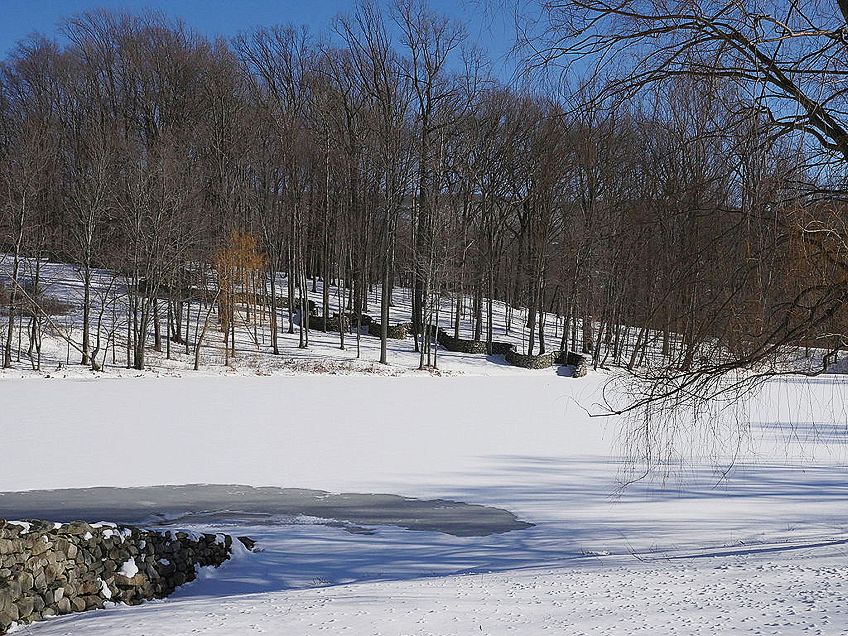
Andy Goldsworthy Photography
Within Goldsworthy’s artistic style, photography exists as a very important element to accurately capture his work due to the fact that they are all short-lived. Goldsworthy began to establish the idea of photographing his works once he had finished placing a piece together before the separate materials and structures began to surrender to the elements.
The taking of photographs provides the only real evidence that his artworks once existed, with photography showing the artwork when it is at its highest point and capturing the moment it is most alive. Through capturing these moments, Goldsworthy hopes to demonstrate and express the intensity that is present within every art piece.
Photographs are taken before, during, and after a structure has been completed in its environment, with these photos existing as the permanent record of each artwork. While most of Goldsworthy’s well-known works have been created in remote locations in nature, some of his pieces have been exhibited at galleries through the photographs that he had taken.

Some exceptions exist, such as the rock walls that he constructs, as these works remain unphotographed since they are a little more hard-wearing than the majority of his other pieces. However, while Goldsworthy may not have taken photographs of his rock walls, the art piece remains vulnerable to general decay, meaning that his artwork will not stay as he created it.
The act of taking photographs of his installations tells the story of the piece and documents it as it gives way to the cyclic nature of the environment. What is interesting is that Goldsworthy is never certain about the exact transformations that his pieces will undergo, which makes documenting his work through photography more valuable to be able to accurately tell the story of the artwork.
Additionally, Goldsworthy takes videos of himself within the construction phase of his land art sculptures. These videos portray the realism of his work, as he is not afraid to capture moments where his art pieces are not successful. We as an audience get to see both his triumphs and failures within the Andy Goldsworthy sculpture process, which emphasizes the authenticity of their creation.
Andy Goldsworthy photography and videos that are created become an artwork in their own right, with viewers being able to see the beauty of the chosen landscapes and the artwork’s relation to it through these mediums. By combining his actual sculptures with videos and photographs that document his progress, his artworks can be initially and privately viewed out in nature by himself, as well as in gallery and exhibition spaces by a wider audience.
Andy Goldsworthy Artwork: Most Famous Pieces
Out of the numerous sculptures and artworks that nature artist Andy Goldsworthy has created, a few stand out as notable contributions to the overall Land Art movement. While most of his pieces only existed for a short time, Goldsworthy has also created some sculptures for specific exhibition that were intended to withstand the general decay of time.
Japanese Maple Leaves
Existing as one of his works created overseas, Japanese Maple Leaves is one of his more well-known pieces, due to the intense color he used. Goldsworthy traveled to Ouchiyama, Japan in 1987 to create this ephemeral artwork out of Japanese red maple leaves that he stitched together to form a floating chain in water.
What Is the Medium of Andy Goldsworthy’s Japanese Maple Leaves?
When looking at the artwork, it is easy for one to wonder what the medium consists of, as it simply looks like a pile of leaves at first glance. This encompasses the beauty of this art piece, as the vivid red maple leaves, native to Japan, make up the ordinary medium used.
Although Goldsworthy had already worked with the color red up until this point in his career, the vibrant red of the maple leaves that he encountered in Japan were one of the strongest and brightest that he had ever seen. This was due to their intense color and context amongst the green trees in the Japanese mountainside.
By working with the leaves suspended in water, Goldsworthy was able to truly bring their color alive and it was through this work that he began to focus on really extracting the colors of the materials used in his pieces. Goldsworthy believed that it was through this artwork that he was able to master using such bright colors through first studying it in nature.
Rain Shadows
This art piece, created in 1984, marked the beginning of Goldsworthy’s fascination with creating art outdoors with whatever found objects he came across in a chosen landscape. For this art piece, Goldsworthy lay down on the ground just before it started to rain and remained in that spot until the rain had stopped, in order to create a “shadow” of his body in the aftermath. The only documented evidence of this artwork is the photograph that he captured after the storm has passed.
Storm King Wall
Existing as Goldsworthy’s first museum commission of a permanent work, this sculpture was created in the United States from 1997 to 1998 and is his largest and most ambitious single installation piece to date. Originally thought to be a 750-foot-long dry-stone wall that snaked through the woods, Storm King Wall was extended past its supposed endpoint and continued downhill to the pond that was nearby.
This wall illustrated the nature-based method that Goldsworthy employed when constructing sculptures like this. In creating this wall, Goldsworthy built, in certain areas, stone-by-stone upon the remainder of an old farm wall that was discovered in the woods. The wall rose to a height of about five feet and totaled 2278 feet in length, and stretched uphill to Storm King’s western boundary.
Additionally, no concrete was used to stack the 1578 tons of fieldstone that were used, with the stones simply being placed over one another in such a way that they created traction between them. The stones that were used were carefully selected and placed meticulously around one another and are as captivating as the artwork itself.
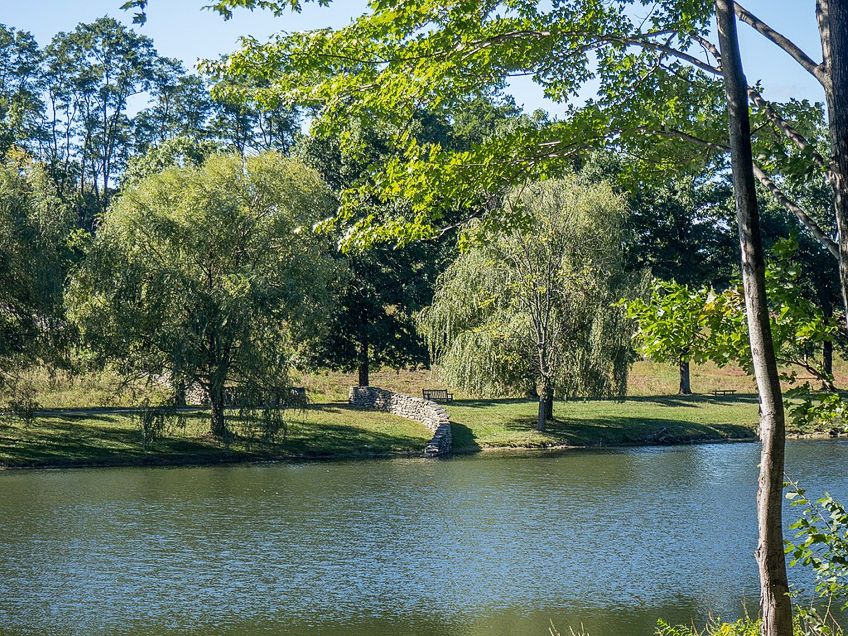
Five Men, Seventeen Days, Fifteen Boulders, One Wall
In 2010, on the 50th anniversary of Storm King, Goldsworthy returned to America with the same team that helped him construct Storm King Wall to build Five Men, Seventeen Days, Fifteen Boulders, One Wall. This installation was created in one of the fields that had captivated Goldsworthy during his initial visits to Storm King.
For this sculpture, Goldsworthy and his team of five men modified a broken down 309-foot wall over the course of 17 days. The major span of the wall was rebuilt, with the builders allowing the ends of the wall to gradually taper off for it to become reminiscent of an ancient ruin. In line with the sculpture’s name, the wall meandered around 15 boulders along a path in a grove of trees.
Exhibitions
Throughout his career, Goldsworthy’s work has been shown in several solo exhibitions, taking place in England, the United States, France, Brazil, New Zealand, and Australia to name a few destinations. One of his early exhibitions included his traveling retrospective, Hand to Earth: Andy Goldsworthy: Sculpture: 1976-1990, which was exhibited at the Leeds Art Gallery from 1990 to 1991.
The most recent exhibition of Goldsworthy’s work, in collaboration with other artists, took place from October 2020 to February 2021 and was titled Natural Encounters. This took place at the Leeds City Art Gallery in the United Kingdom. The theme of this exhibition focused on how the Coronavirus pandemic has changed the way humankind views their relationship with nature on varying levels.
Themes relating to this included reduced traffic which led to a return of audible bird songs, as well as a renewed gratitude for our outdoor parks and gardens. Additionally, Goldsworthy’s work within the exhibition addressed the idea that nature exists as a very important and fundamental part of our physical and mental wellbeing.
Natural Encounters explored the many different strategies that artists have used to approach and understand nature, with this exhibition including drawings, paintings, photographs, sculpture, and prints by other artists in addition to Andy Goldsworthy.
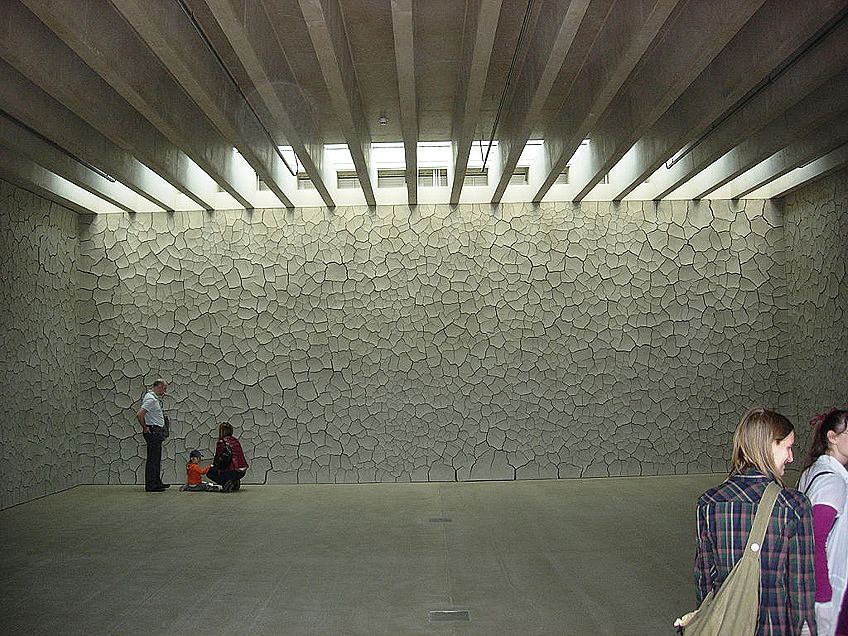
Awards and Significant Works
Throughout his prolific career, Andy Goldsworthy has accumulated many awards and accolades that have recognized the value in his land art sculptures and works. These include the North West Arts Award (1979), the Yorkshire Arts Award (1980), the Northern Arts Award (1981 and 1982), the Northern Arts Bursary (1986), the Scottish Arts Council Award (1987), and the Northern Electricity Arts Award (1989).
However, his most noteworthy award remains being named Officer of the Order of the British Empire (OBE) in 2000. Out of all the works that Goldsworthy is associated with, Storm King Wall (1997 – 1998) remains his most talked about and monumental work, as it is synonymous with the entire Land Art movement that Goldsworthy created his art in.
Goldsworthy has also published various books and articles throughout his career, with written work dating back to 1985. Andy Goldsworthy books explore his life as an artist in addition to highlighting some of the most pivotal and significant works that he has created throughout his life. The latest of Andy Goldsworthy books, published in 2015, is titled Andy Goldsworthy: Ephemeral Works: 2004-2014, which explores his creative process and features around 200 of his chosen artworks.
- Goldsworthy makes art using the materials and conditions around him
- He creates works that exist briefly before the effects of nature take over
- This book features approximately 200 of Goldsworthy's works
Final Thoughts
After reading through the above Andy Goldsworthy biography, it becomes clear that this artist belongs within the Land Art movement through the outdoor sculptures he creates. Despite spending his entire career creating temporary works outdoors, nature artist Andy Goldsworthy is still active within the field and creates different pieces today.
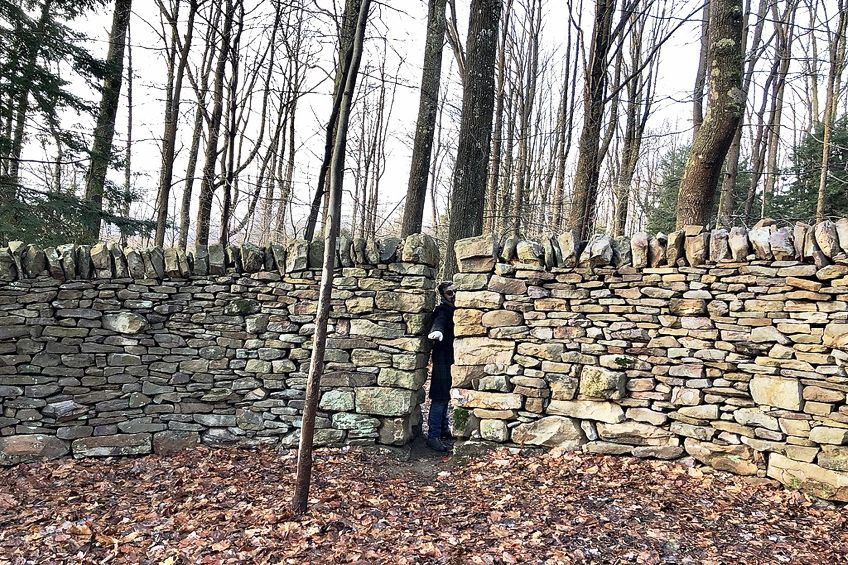
Questions about his artworks, such as “what is the medium of Andy Goldsworthy’s Japanese maple leaves?” are answered through the understanding that all of his transient land art pieces exist as compilations of found materials and elements at the site. Currently, he lives in Scotland with his partner and continues to work as passionately as he did all those years ago.
As an artist whose work usually takes place in more rural settings, Goldsworthy’s definition of the natural world remains broad. He sees nature not as something that is found in artificial spaces like galleries, but something that extends to the secluded parts of the outdoor world where his artworks come to life. This demonstrates that no boundaries truly exist between man and nature.
Isabella studied at the University of Cape Town in South Africa and graduated with a Bachelor of Arts majoring in English Literature & Language and Psychology. Throughout her undergraduate years, she took Art History as an additional subject and absolutely loved it. Building on from her art history knowledge that began in high school, art has always been a particular area of fascination for her. From learning about artworks previously unknown to her, or sharpening her existing understanding of specific works, the ability to continue learning within this interesting sphere excites her greatly.
Her focal points of interest in art history encompass profiling specific artists and art movements, as it is these areas where she is able to really dig deep into the rich narrative of the art world. Additionally, she particularly enjoys exploring the different artistic styles of the 20th century, as well as the important impact that female artists have had on the development of art history.
Learn more about Isabella Meyer and the Art in Context Team.
Cite this Article
Isabella, Meyer, “Andy Goldsworthy – A Look at Nature Artist Andy Goldsworthy.” Art in Context. March 8, 2021. URL: https://artincontext.org/andy-goldsworthy/
Meyer, I. (2021, 8 March). Andy Goldsworthy – A Look at Nature Artist Andy Goldsworthy. Art in Context. https://artincontext.org/andy-goldsworthy/
Meyer, Isabella. “Andy Goldsworthy – A Look at Nature Artist Andy Goldsworthy.” Art in Context, March 8, 2021. https://artincontext.org/andy-goldsworthy/.









